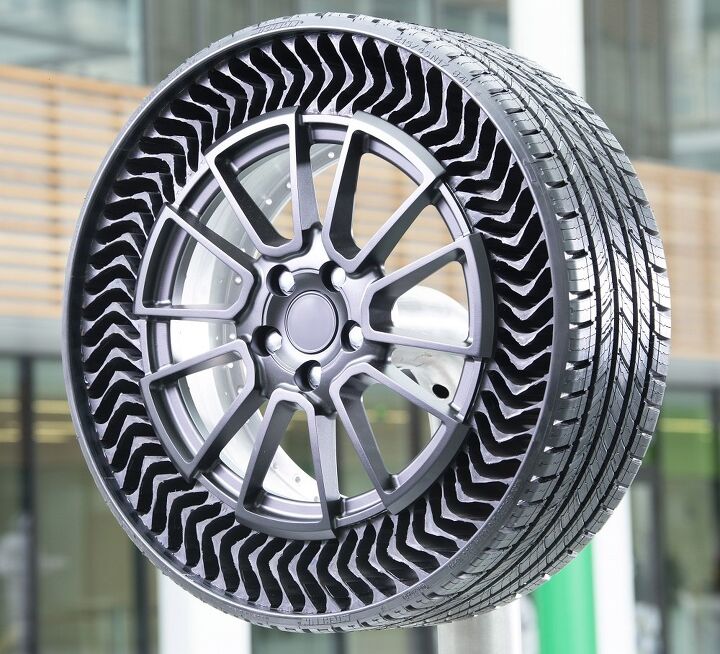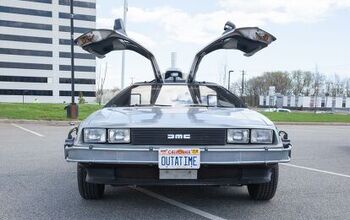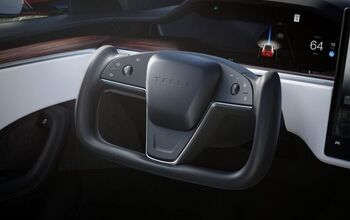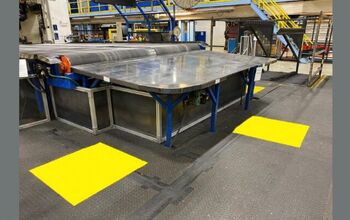Would You Drive With Airless Tires?
The automotive industry has witnessed a revolutionary development with the introduction of airless tire technology. This innovation eliminates the need for air in tires, offering a more stable and reliable driving experience. It effectively addresses the common issues of flat tires and rapid pressure loss, enhancing safety and comfort for drivers.
Michelin's Role in Airless Tire Innovation
Michelin is leading this technological advancement with its Unique Puncture-proof Tire System (UPTIS) prototype. Designed for passenger cars, UPTIS was first showcased at the Movin’On summit in 2019. This marks a crucial step towards making airless tire technology widely available.
The Composition and Advantages of UPTIS
UPTIS distinguishes itself with its composition, merging an aluminum wheel and a flexible load-bearing structure crafted from glass fiber reinforced plastic (GFRP). This structure preserves Michelin's known tire performance while being adaptable for high-speed use, a feature not seen in previous airless tire models.
Benefits Across the Board
UPTIS introduces several advantages:
- For Motorists: Eliminates concerns about tire damage from road conditions.
- For Fleet Owners: Boosts productivity by minimizing vehicle downtime and tire-related maintenance.
- Environmental Benefits: Significantly cuts down tire waste, reducing environmental waste and harm.
Tackling Tire Waste
Each year, a substantial portion of tires are discarded due to punctures, pressure loss, and uneven wear. UPTIS aims to lessen this waste, potentially saving around 200 million tires, equivalent to 2 million tonnes, from disposal.
UPTIS: Shaping the Future of Mobility
Beyond traditional vehicles, UPTIS is also tailored for emerging clean and autonomous mobility solutions. It's especially useful for shared mobility services, including autonomous shuttles and vehicle fleets.
Partnerships and Practical Applications
Michelin's dedication is further demonstrated through its collaboration with DHL, equipping delivery vehicles in Singapore with UPTIS. Real-world tests are underway in various locations like Las Vegas and Thailand, showcasing UPTIS’s durability and effectiveness.
This article was co-written using AI and was then heavily edited and optimized by our editorial team.
More by TTAC Staff
Latest Car Reviews
Read moreLatest Product Reviews
Read moreRecent Comments
- Matt Posky EVs are fine. People can buy them. Companies should build them. But the regulations and products have to be sound. The issue is that they aren't -- whether we are talking about all-electric vehicles or combustion ones.
- MaintenanceCosts The fact is that if you are in product planning for a worldwide automaker the Chinese market comes first, the European market second, and our market after that.That means you have to have a lineup of EVs in at least the segments that sell in China and Europe. That means small to medium CUVs, city cars, and maybe a couple of global-size SUVs and pickups. If you have development dollars left over after serving your biggest markets, maybe you can put them into North America-specific products like large CUVs and full-size pickups. At least for the next 10 years you will need an ICE hybrid powertrain to go with those products.Non-hybrid ICE is a dead end for all but the tiniest niche of sports cars.
- Duties I’ve never liked Nissan, but think the new Rogue and Parhfinder are at least, finally attractive. I will never own an EV. Bye Nissan. Sayonara.
- Daniel Bridger Bye, bye Nissan.
- Billccm What a shame. I remember when Buick built premium cars at a reasonable price.


































Comments
Join the conversation